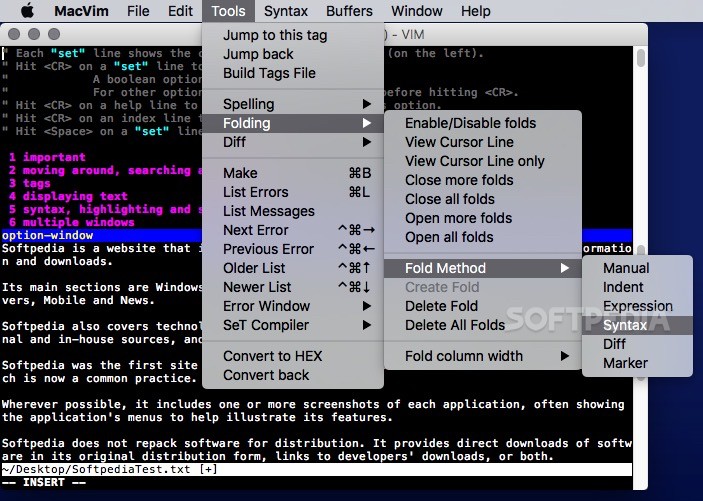

- #Opening macvim through terminal install#
- #Opening macvim through terminal drivers#
- #Opening macvim through terminal pro#
- #Opening macvim through terminal code#
- #Opening macvim through terminal torrent#
This tool monitors your file system and watches for changes to your web app’s files – ruby code, php code, css, html, you name it and LiveReload will monitor it. Not only is the technology behind it really really cool – EventMachine and websockets – but what it does is amazing. This is probably my favorite new tool out of all of these tools.
#Opening macvim through terminal install#
It is an isolated install of them, providing a clean separation between your machine and the web development stack. You don’t need to install or configure any of these tools on your machine, with XAMPP. XAMPP is, in a nutshell, a complete package for web development in the xAMPP stack (hence, the name).

If you’re doing any WordPress work, or any web work that involves Apache, MySql, PHP or Perl, then you need to be using XAMPP. I’m also working on some WordPress sites – mostly converting existing sites to WordPress, including the creation of themes, etc. Yes, I am doing more than just Rails work. The few things it doesn’t handle are easy to do on our own. It handles most of our needs without any effort. The Rails drive that Joey and I are using is Mongoid. It’s quite impressive and an option that everyone should have in their back pocket.

#Opening macvim through terminal drivers#
From it’s native Javascript interface, to the drivers that are available for the various languages, and the performance and scalability of the system. Yes, I’ve jumped into the whole “NoSQL” thing. These, combined with other misc items and Rails itself, make the web development story very nice. Here’s a few of the plugins that Joey and I are currently using with Rails: The de-facto standard in MVC web frameworks, these days. When you cd into that folder in terminal, rvm will read the file and automatically set the correct version of ruby and the gem set that you want to use for that project. The best part is, you can automate rvm usage by putting a. It allows you to easily switch between different versions of ruby, install new versions of ruby, and manage your gems for specific projects with gem sets. If you do any work with ruby on OSX or Linux, you need to be using RVM. Of course, there are countless others available. … and the many, many plugins available make automating most tasks that you would want from an IDE, extremely simple. After many months of working with vim and vim-like plugins for other editors, I can’t imagine using anything that doesn’t have vim’s core editing features.
#Opening macvim through terminal code#
It’s the most difficult “text editor” I’ve ever used and the most amazing code editor I’ve ever fell in love with. I’m sure that will change once the next new hotness comes down the line… but for today (and the last 2 years), Git is where it’s at for me. The only source control I love, at this point. The commands seem to be easier and more friendly to work with. I went with Homebrew at the suggestion of several people and it’s been quite nice in comparison to Macports. I’ve used Macports in the past and it was… usable. Linux has the wonder packages managers, and OSX has a few options, too. It works out well – only requires one menu option to launch all of the core services of a project. Joey has also talked about setting up window groups to auto-start the various components of a project. I’ve already talked about my terminal prompt. For now, though, Terminal handles my needs quite nicely. I’ll probably get around to that eventually. I’m using the standard Bash shell at this point, though a number of people have told me I need to try out ZSH. TerminalĪt the root of it all is the OSX Terminal. Here’s what I’ve settled on, so far, creating an awesome development experience – far better than any IDE I’ve ever used. You don’t have to be a OSX user to take advantage of them, but it certainly seems to be easy if you are. Most of these tools are available to other platforms, too. I’ve thrown in a few of my own tools based on all the things I’m doing and my own personal experience, too.
#Opening macvim through terminal torrent#
In that time, I’ve been very fortunate to have Joey Beninghove guide me through the torrent of options and possibilities for building web apps in OSX.
#Opening macvim through terminal pro#
It has been almost a month since I ventured out into contracting and took up OSX on a Macbook Pro as my primary operating system. Web Development Stack In OSX 9 December, 2010.


 0 kommentar(er)
0 kommentar(er)
